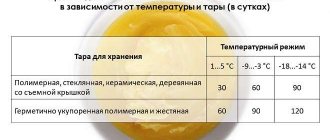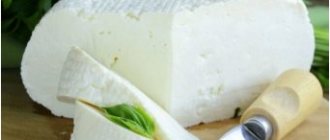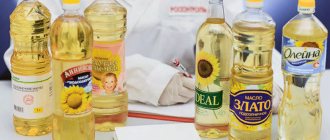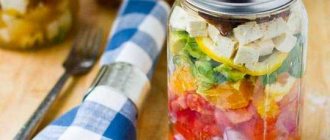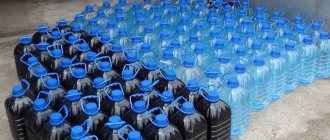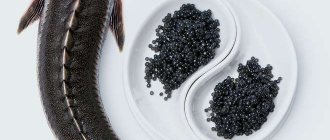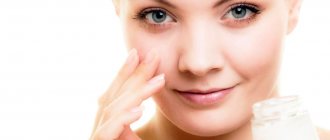How long and how to properly store opened wine?
There are several general rules for storing wine after opening the bottle. These include:
- Use an elastic stopper that seals the neck tightly.
- Keep refrigerated.
- Pour into a small container, this will slow down the oxidation process several times.
- Using a vacuum pump, create an airless space in the bottle, this way you can increase the shelf life of the drink up to 10 days.
- Avoid exposure to heat, vibration, light.
Storage
How long can opened wine be stored if the above conditions are not followed? Maximum up to 3 days, depending on how high the activity of the acetic bacterium is. It is when it multiplies that the taste of the wine deteriorates and a specific smell appears.
Important! We are talking about the storage conditions for natural vintage wine made from first-press grape juice of different varieties. Powdered wines with dyes, preservatives, and E-shkas can last for months. But such a drink cannot be called healthy.
In a refrigerator
From the moment the bottle is opened, oxygen enters it, triggering oxidative processes. You can store wine in the refrigerator, even with a tightly fitted cork, for no more than 2-3 days. During this time, the fruity aromas of wines made from Sauvignon Blanc and Riesling grape varieties disappear. White wines aged in oak barrels (Chardonnay) can retain their beneficial and taste properties for up to 5 days.
Table red wines, when uncorked, take in oxygen and reveal their unique bouquet, but the benefits of the drink also disappear after 2-4 days.
Sparkling wines last the least. Even if re-corked and refrigerated, you need to drink them within 7-8 hours. Then they become, if not dangerous, then they certainly won’t bring any benefit.
Sweet and fortified wines are champions of long-term storage. Stored in an open container but refrigerated for up to 28 days. A large percentage of sugar and alcohol helps reduce oxidative processes.
At room temperature
Opened wine can be stored at room temperature for no more than a day. Shelf life is affected by light, heating devices, and vibration. The drink will not become poisonous, but will completely lose its benefits. It will “fade out”, become tasteless, some wines change color and smell. Heat and humidity cause intense fermentation and oxidation.
You can increase the period to 1.5-2 days if you put the container with the drink in a pantry with a temperature no higher than 150C.
Important! There are exceptions to any rule; there are varieties of wines that do not comply with general storage requirements.
This is how Burgundy or Condrieu wines reveal their unique charm and aroma only a day after opening.
What will help open wine not to lose its taste?
A tight lid and refrigeration are the main help in maintaining the drink. The oxygen problem, although not completely, can be solved by a vacuum plug. Using a special device, excess air is pumped out of the bottle, and the penetration of fresh air is blocked by a tight cork. Of course, it cannot be compared with the factory one, but it will help significantly in preserving the drink.
Some experts advise pouring wine from a large bottle into a small one to force out excess air. But if there is very little drink left, it is better to either finish it or use it for cooking.
Wines are like people. They are born, mature, grow old and are destroyed. And they need to be stored in such a way as not to interfere with natural processes, not to speed them up or slow them down. Enjoy wine, treat your friends and family, savor every sip and enjoy life!
What should you not do with an open bottle of wine?
You definitely shouldn’t just leave it on the countertop in the kitchen. If stored carelessly with access to air, sunlight, humidity above 80% and without cork, the wine can spoil after 3-4 hours. White varieties are especially sensitive to light, so they are kept in bottles made of brown or green glass, which do not transmit ultraviolet light well.
Cannot be stored open
It is not recommended to place an opened container of wine, sealed with a stopper, in a horizontal position. The greater the volume of air space above the drink, the faster it loses its quality.
With frequent temperature changes or storage above 200C, the wine may sour. As a result, from a noble drink you can get a mash with a specific taste and smell.
How to tell if your beer has gone bad
The main sign of spoilage is a sour taste. The fresh product is sweetish with notes of malt, bread, and has a characteristic aroma. If stored incorrectly and after the expiration date, beer becomes similar to kvass mixed with mash or sour compote. Sometimes bitterness and an alcoholic aftertaste are added to the acid.
Other signs of damage:
- remains on the walls. After a sip, foam should remain on the walls of the glass mug. Clean dishes are a sign of spoilage;
- the appearance of a protein sediment, cloudiness at the bottom of the dish. It appears 7-10 days after opening the keg or barrel. Sometimes earlier, depending on storage conditions.
If you bought sour beer on tap, we recommend returning it to the store. Beer that has lost its quality during home storage can be used in yeast dough for pancakes and pancakes. Suitable for marinating meat and preparing shanks according to German recipes.
Top articles: How best to store dried mushrooms
Is there an expiration date?
Almost all types of wine containers available for sale in supermarkets bear the inscription “Subject to storage conditions, the shelf life is unlimited.” But if you study the composition in detail, you can find in it: antioxidants, preservatives, sulfur dioxide and potassium sorbate. In this case, there is no need to talk about wine; pseudo-wine drinks can be stored in a closed container for a long time. Opened in the refrigerator for weeks. The only thing that can happen to them in the heat is that they can turn sour.
In an open bottle
The labels indicate that wine in an open bottle, subject to storage rules, can stand:
- Dry white “Aligote” at +5..+100С – no more than 5 days;
- “Isabella Crimean” table, red semi-sweet – at +1…+ 50C lasts up to 3 days;
- Dry white Chardonnay - up to +100C can be kept open for 3 days.
- Fortified wines remain open in cold and low humidity for up to 28 days, due to the high alcohol and sugar content.
Where is the best place to store wine?
Let's list the main ways to keep wine at home in order of worsening conditions:
- A clean wine cellar/cellar with suitable humidity levels and temperatures.
- Climate controlled cabinet/dedicated refrigerator.
- A separate cool room/zone in the house with good ventilation, protected from direct light.
- Closed horizontal shelves, racks, drawers, etc.
- Open vertical shelves, drawer racks, etc.
Exclusive offers
For eccentric people, original wine storage options have been invented:
- Under the water. An unusual method was invented in Spain: for a couple of hundred euros, everyone can get a bottle of wine “from the bottom of the sea.” Alcohol is located under the water column in the Bay of Biscay, at a depth of 20 meters. The temperature there is the most suitable: from 11 to 15 °C. The horizontal position is also respected.
- Some wineries are ready to offer their storage space for rent: ancient cellars - what could be better for collectible items? However, the cost of such services is kept secret and is available only to a select few.
Remember that wine is practically a living creature that “breathes,” “ripens,” and “ages.” When planning long-term storage of drinks, care must be taken to create suitable conditions. Otherwise, it is better to purchase wines immediately before drinking, which will save you unnecessary hassle and save space.
In plastic
If a plastic bottle has the PETE or HDPE mark on it, it can be filled with wine. Although theoretically homemade wine can last 3-5 months in a hermetically sealed plastic container, it is still not recommended.
Plastic bottles allow light to pass through; when interacting with alcohol from the inside, the plastic begins to dissolve, releasing harmful compounds into the drink. After purchasing bottled wine in stores, it is ideal to drink it within 24 hours.
In a tetra pack
In terms of shelf life in Tetrapak boxes, wine is close to its bottled counterparts. Opened dry wine, like other types of noble drink (pink, white, fortified, sweet, etc.), regardless of the type and color, is stored longer in a container with a tap. This is explained by the complete lack of access to air during a spill; the tetrapack retains its tightness. Wines in this package can last up to 2 weeks.
In a tetra pack
In standard boxes with lids, wine can be stored for up to 5 days, it all depends on the conditions, type and composition of the wine.
Storage tips
When starting to open a bottle of wine at a party, everyone thinks that they will finish it. But often after the celebration there is alcohol left in a printed container
To maintain its freshness, it is important to minimize the contact of the drink with oxygen.
Methods for storing opened wine
It is worth saying that there is no universal shelf life for wine after opening it; everything will depend on how tightly the bottle was closed and in what conditions it lies. Those who want to preserve the quality of alcohol in open containers can choose one of the ways to do this:
Seal the bottle tightly
Those who know in advance about the need to store an opened bottle should uncork it very carefully. Do not pierce the cork with a corkscrew.
If such a problem occurs, then the cork will have to be replaced with another one. It is important that it fits tightly to the neck and is dry. Otherwise, you will not be able to save the drink. Pour If there is little drink left in the bottle, then it must be poured into a smaller container. This will reduce the area of interaction between alcohol and oxygen. Place the opened bottle in the refrigerator. It is recommended to keep the container on the door; storing opened wine in this state can last up to 1 week. Prevent exposure to direct sunlight. You should not store an open bottle of alcohol near heating devices, or in places where the container will be exposed to sunlight. This drink cannot be consumed in the future. Remove air from the bottle. You can find many devices on sale that help create a vacuum in containers. By pumping out the air, you can preserve the wine much longer. The period will vary from 2 weeks to several months. The best option is to buy a special plug with a vacuum pump. Such devices help maintain tightness, however, if the wine is not drunk within 3 months, then the air should be pumped out again from the bottle.
A significant disadvantage of this storage method is that the drink loses its special wine taste and aroma. Connoisseurs are unlikely to want to drink it, although wine is good for marinating meat, for example.
Shelf life of different drinks
It is very difficult to unequivocally answer the question of how long wine can be stored if the type of drink is unknown. The duration of storage of an opened bottle depends on this.
- Sparkling varieties are in high esteem among men and women, but not many people know how long unfinished alcohol can be stored. Their term is short.
- Even if the container is tightly corked after drinking, the product will retain its pleasant aroma and sparkling quality for no more than 24 hours.
- The drink will simply look like water with a specific aroma; drinking the liquid will be unpleasant and unsafe.
Therefore, you should not experiment.
Light wines such as rose should also not be stored for long after opening; the best option is to drink the drink on the first day. The maximum shelf life of wine is 72 hours. True, during this time the wine will lose its individual taste, astringency, and the aroma will not be the same.
White wine should also not be stored longer than 72 hours. The drink has a very light texture and contains a minimal percentage of alcohol, so the unique fruity notes begin to evaporate from the wine very quickly.
Full-bodied red wines can withstand longer storage in an opened bottle.
If the wine is young, then tannin is present in large quantities. Such a drink can sit in the refrigerator for a couple of days, and on the second day the wine will reveal its taste, unique notes, astringency, and an aftertaste will appear in it. All this happens precisely under the influence of oxygen.
There are also lovers of the fortified dessert drink. It contains quite a lot of sugar and alcohol; if stored properly, the product can retain its taste and aroma for a whole week.
A little advice for those who put an open bottle of wine in the refrigerator. It is recommended to put a sticker on the container with the date the drink was opened; this approach will prevent the alcohol from spoiling, and the person who decides to drink it will not be poisoned.
Every lover of light alcoholic drinks should be able to preserve the product even when opened, because an opened bottle is not always finished. If there is no way to preserve the wine, then you should freeze it or prepare some kind of dish.
- Alcohol will be an excellent ingredient for marinade.
- Meat marinated in red wine acquires a delicate taste and unique aroma.
Knowing how to store open wine, everyone can decide for themselves whether it is necessary at all or not. The main thing is to remember that the product may deteriorate, and if this happens, you should pour out the liquid without regret.
X
Is it possible to increase the shelf life of wine?
There are several ways to increase the shelf life of opened wine. However, we are not talking about months: the maximum by how long the shelf life can be extended with a number of tricks is 2-3 days.
Replacing a large container with a smaller one
How long you can store opened wine by transferring it to a smaller bottle depends on a number of factors. If you pour the remains of the drink into a dark container, put it in the cold, protect it from light, the wine can retain its physical and chemical properties plus 1-2 days. It is possible to extend the life due to the absence of a large amount of oxygen, which is actively involved in the oxidation process and spoilage of taste.
Vacuum plug
Wine oxidation can be prevented by completely isolating the drink from O2 with a vacuum stopper. A special pump creates an airless space in the container, and the stopper, tightly ground to the walls, prevents air from entering again.
Use of argon or nitrogen
Cylinders with inert gases may contain argon, CO2 and nitrogen. The last two can change the physical and chemical properties of the wine, so they are used as a last resort. It is better to use pure argon.
The principle of operation is that argon is pumped through a cork with a needle, which temporarily “preserves” the wine, preventing it from spoiling.
White and red wine: are there any differences?
There are no particular differences in the storage conditions of red and white wine, but you should be aware of some subtleties. White wines should not be stored for more than two to three years, with rare exceptions - for example, if you are lucky and have Chardonnay in your collection. In this case, you can open it even after 20 years, if, of course, you have the patience and willpower to wait that long. Red wines can be stored for up to 10 years, unless we are talking about Burgundy or Bordeaux, since such wines will become even tastier and more aromatic after 100 years.
White, rose wines and champagne require lower storage temperatures, while red wines are considered less sensitive and unpretentious.
How to tell if wine is spoiled
If you choose the wrong place or storage conditions, the drink may spoil. The product should not be consumed if it has a yeasty taste or has changed color. For example, if the shade became pearlescent, then the wine became sick, and if thin silky streams appeared, it became infected with dangerous bacteria.
The quality of the drink is also affected by the technology of its preparation. If you notice that the liquid has turned black or, conversely, whitish, it means that the product was prepared inappropriately.
Wine storage conditions include 5 main criteria: optimal temperature and humidity, absence of sunlight and vibrations, correct placement of bottles. If you follow all the described standards, the wine will retain its unsurpassed taste and aroma, and will last longer than expected.
Depending on the packaging
It is generally accepted that the best material for storing wine is glass. This is true. Glass is much less chemically reactive than plastic. However, now they make good packaging from other materials. Thus, packages of some brands preserve products from six months to a year.
It is not recommended to use plastic bottles for packaging. Their material reacts with the components of wine products. Consequently, quality suffers.
Cork
Branded manufacturers seal their bottles with corks made from natural materials. The wooden product suffers from a violation of the humidity regime. This is also worth paying attention to. The cork may dry out and allow air to enter the product. And this leads to oxidation of the product and loss of quality.
Winemakers store corked bottles horizontally. This allows you to regulate the humidity of the wood due to the drink itself. However, in stores the containers are placed vertically. Therefore, you need to examine the plug for damage.
For inexpensive products, plastic stoppers are used. These do not help maintain the balance of gases in products. And this reduces the period of preservation of the quality of intoxicated drinks.
What happens to open wine?
As soon as the bottle is uncorked, a lot of air begins to flow into it, and with it oxygen. This is when the wine suddenly begins to “age” as a result of oxidation reactions, first revealing the bouquet and then killing it. Bouquet, not wine.
Nothing dangerous or unhealthy happens with open wine. It just becomes uninteresting to lose everything we paid for: smell, taste, bubbles (in sparkling wines). Further fermentation of the vinegar is possible, but not quickly, and the result is a fairly good food product - wine vinegar.
In the first few hours, open wine may even benefit from active contact with oxygen. The wine is deliberately aerated (decanted), which gives the wine a better experience in the glass.
How to recognize such a wine?
Whirl energetically in a large glass for about ten seconds and compare the sensations with the first sip from an open bottle. If the wine seems more palatable after whisking, you can decant it. If not, you can drink it before the oxygen kills it.
Why is wine stored horizontally?
Once opened, time cannot be turned back, and one way or another the contents will undergo changes to varying degrees when interacting with the environment. Of course, it is recommended to consume the product within 24 hours after opening, but if for some reason it was not finished, you can slightly delay the spoilage time and have time to enjoy the exquisite taste and aroma. To do this, you need to know how long a certain wine variety lasts.
Thus, brightly sparkling varieties that suddenly fizzle out and lose their usefulness are considered whimsical. White species also quickly lose their unique qualities and aromas. It is advisable to drink such products at one time, but if it is a dense-bodied variety, it is possible to enjoy the composition the next day after opening. Beaujolais, Valpolicella, and young Spanish wine also have a short shelf life.
It’s a different story with red varieties, which can “live” without losing their nutritional and beneficial taste properties without any special devices for up to two days. High-quality “Bordeaux” and “Cabernet Sauvignon” fully open up only on the second day, therefore, the younger the drink, the more rational it will be to hold it a little longer, allowing all its notes to show.
Speaking of dessert alcoholic products, they can be stored calmly in the refrigerator for about one week without loss of taste and color, due to the high sugar content in the composition, which prevents the oxidation process. But these deadlines should not be neglected - after the time has passed, you cannot drink alcohol.
In particular:
- It is not recommended to place the bottle horizontally; a vertical position is required. This way, the usefulness of the drink will not suffer, and it will certainly not deteriorate, as can happen with containers lying horizontally. The thing is that it is in this position that a large area of the contents is oxidized under the influence of air, which one way or another enters the container through the cork, and it will no longer be useful, or even completely deteriorate.
- You should not place the bottle on a window, especially an open one. Since ultraviolet and sun rays negatively affect the condition of wine. Even though containers with dark glass often have protection from UV rays, some dose still gets inside, which does not have the best effect on the alcohol and spoils its quality.
- You should not place wine containers near heat sources, which have a detrimental effect on the taste characteristics, losing their usefulness. The drink oxidizes faster, loses its original appearance and will no longer have a beneficial effect on the human body with moderate consumption.
The average shelf life is from 3 to 5 days. This indicator depends on the acidity, and if it is high, the drink will be less susceptible to spoilage. For example, Pinot Noir will oxidize faster because it initially contains lower tannin content. Also, in some cases, open containers for 24 hours can only improve their taste.
In the refrigerator, their properties are preserved for up to three days, which is influenced by the manufacturing method. If side fermentation was done in vats where there is pressure and temperature control, storage time is reduced. Created using the classic method, sparkling wine or cava can be kept in the refrigerator for no more than three days, prosecco - no more than one day.
They remain in their natural state for 3 to 5 days if all rules are followed. But in certain cases, after the very first day, it is possible that acidity will appear in the taste, especially if it is Viognier or Chardonnay. In other brands, on the contrary, the taste can only improve, for example, if it is Riesling or Sauvignon Blanc.
Dessert drinks
The high content of sugar and alcohol in the composition allows these representatives to resist the effects of oxygen longer. Madeira, Sauternes, port and sherry can be safely kept in the refrigerator for about one week after opening.
Fortified booze
It does not change its properties for up to 28 days if it is kept in a cool room with proper humidity, since grape alcohol is present in the composition, which extends the shelf life.
Packaged
The well-known “boxed” alcohol can be stored in accordance with the sample level indicated on the bottle. If the container has a special filling tap, then this indicator increases (up to two to three weeks when open), because this design prevents the influence of oxygen on the contents.
No. 1: Cap the bottle
We suggest you read: How long to boil white laundry in a saucepan
Everything is simple here: you can trim the cork a little and cork the bottle back. This will break the tightness, there will be no vacuum, a little air will penetrate, so the danger will not pass, but the wine will still be stored a little longer.
There are also special stoppers for sealing wine. You can buy these in specialized departments.
Additionally, many wines, particularly New World wines, produce wines with screw caps. Believe me, the quality of the wine does not suffer from this, but closing them back is very convenient: you don’t need to invent anything.
No. 2: Pour into a sealable container
This is a fairly simple option: pour it, close it and that’s it. Moreover, the more filled the vessel you choose is (that is, the less free space remains in it), the better. And store your wine in the refrigerator. However, remember that this method still does not promise eternal life to the drink, so try to consume it as quickly as possible.
#3: Unusual Methods
Methods for the most desperate wine lovers. For example, you can purchase a special device in the store to create a vacuum in a bottle. This device consists of a rubber stopper and a device for pumping out air. The vacuum is not created completely, so this wine does not have the same storage conditions as an unopened bottle. And they say that poured wine tastes better and better than this one.
You can also purchase a liquid nitrogen cylinder. It will preserve the wine. To do this, you need to quickly inject nitrogen into the wine with a syringe. This prevents the wine from interacting with oxygen, but it is very difficult: acquiring nitrogen, storing it, and using it.
Well, we figured out how to store open wine. There is only one thing left - buy this very wine at the WineStreet store.
Store opened wine in a container with a tight-fitting lid. Plastic or special foil bags are suitable for this. The drink should not be placed vertically, as there is a risk of causing fermentation. A private entrepreneur who has his own vineyards must take care of a separate room in which the goods will be stored - a cellar, pantry or special cabinet.
It is necessary to take care of controlling the humidity in the room and good ventilation. Indicators should not exceed 75%. This will create comfortable conditions for the bottles, especially if the lid is wooden. The wine breathes even under the plug, so it easily absorbs foreign odors.
Wine should be stored at the optimal temperature - about 15 degrees. If the mode is low, the product will not develop the necessary taste, and a high one can provoke accelerated ripening and spoilage.
Temperature changes are dangerous for a wine drink. This applies not only to homemade goods. Without following a special regime, the liquid will begin to sour.
Lighting
Important conditions include room lighting. To preserve wine for as long as possible, it is better to keep the container in a dark place. Thus, oenologists significantly increase shelf life. It doesn’t matter whether the drink is dry or semi-sweet - experts note that it is better to store it in an impenetrable container or dark-colored bottles.
White varieties are especially sensitive to light. Brown or green gradient glass containers have protective filters against ultraviolet radiation. Even if the lighting in the room is turned on sometimes, this will not harm the grape drink.
How long can you store an open bottle of wine?
The refrigerator is suitable for those who store 2-3 bottles. For collectors or wine lovers, it is better to purchase a special cabinet with compartments. It can be placed in a garage or cellar. Many people use the equipment for storing food in city apartments. A home bar can be iron or wood, designed to accommodate finished products.
Wine should only be stored horizontally. In this case, the cork does not dry out so quickly. The risk of cracks and air ingress is also minimized. During vertical storage, the product may quickly deflate or evaporate. There is also a danger of oxidation.
- opacity;
- compact packaging of bottles;
- UV protection;
- built-in ventilation system;
- vibration resistance.
Wine can easily be spoiled if the bottle is not properly closed during occasional use. The container must be sealed tightly and stored in a special room. A cellar or equipped room is suitable for this. If you follow all the rules, the drink will get better over the years. It is easy to equip a wine cellar yourself.
- cool;
- darkness;
- dryness;
- wooden shelves.
The humidity in the room should not exceed 80%. If the appearance of fungus is noticed on the walls of the cellar, then it is necessary to normalize the level. The product also suffers from excessive dryness, so it is advisable to achieve an optimal regime. If the basement is not in the house, and the climate is prone to sub-zero temperatures, then storing wine there is dangerous.
You can organize the storage of wine materials in your apartment yourself, without purchasing special cabinets. If there are a lot of bottles, then you need to allocate a separate room. The use of an attic or storage room is allowed.
- An isolated space without windows or heating devices. The temperature should be within 10-15 degrees.
- Optimal humidity.
- It is necessary to equip shelves on which wine bottles will lie horizontally. Especially if the drink is placed there for a long time.
- The lid must be tightly closed, especially when they have already tried to open it.
- Availability of ventilation.
Sweet and fortified
The older the wine, the more interesting and rich its taste and aroma. Fair, but not always. This statement, for example, has nothing to do with an open bottle of wine. Over time, it only loses all its charm.
Professional sommeliers advise, if possible, to drink a bottle of wine immediately, rather than storing the drink. Of course, this is too much for one person. But if you are drinking wine with friends, then you can invite so many people so that everyone gets one glass. Both practical and social!
But if you still can’t drink a bottle of wine at once, you need to properly store the drink. Sparkling wine will “live” literally a couple of hours after opening. It's all about the bubbles - they will gradually disappear and the drink will lose its main flavor. Light rose and white wines can be stored a little longer. If you do everything correctly, they will definitely last a couple of days.
We suggest you read How to quickly humidify dry air in a room without a humidifier
Red wine can be stored for three days after opening the bottle. Sweet and fortified wines can remain drinkable for up to a week.
To keep wine in perfect condition after opening, you need to try. First you should find out what factors adversely affect the quality of your favorite drink. Let's not languish - it's warmth, light and oxygen.
Under the influence of warm temperatures, wine will inevitably deteriorate and lose its charm. To prevent this from happening, do not store the drink at room temperature. Immediately put it in the refrigerator, tightly capping it. This will be the optimal place to store an open bottle of wine.
At the same time, do not put the wine in the door - it is better to place it on the shelf. This way the bottle will not experience temperature changes, which means the wine will be stored a little longer.
The refrigerator will also protect the wine from light. Of course, darkened glass protects the drink from sunlight to a certain extent, but anything can happen.
To save the wine from oxygen, close it tightly with a cork. It must be inserted with the same side that was originally facing the drink. By the way, today in stores you can buy special wine stoppers that will simplify your task.
What does it depend on
The quality of the intoxicating drink is directly related to the following factors:
- composition and type;
- compliance with temperature conditions;
- exposure to light;
- humidity level;
- type of packaging.
Some wines are stored in dark glass bottles. This is due to the fact that the intoxicating liquid is “afraid” of light.
Storage time by variety
The manufacturer is obliged to provide the consumer with information about the shelf life of the food product. Therefore, the packaging must contain expiration date information. It is advisable not to consume the product after the specified date.
But the consumer himself can navigate the shelf life of hop products by their varieties. The fact is that the time of use is related to the following parameters:
- the presence of sparkling elements (champagne, for example);
- amount of alcohol and sugar (fortified or dry);
- recipe features.
The last factor is used mainly by specialists. And an ordinary person can react to the rest. So, the shelf life is approximately as follows:
- sparkling and champagne - up to six months;
- pink - up to five years;
- white - the same;
- red - 15-20 years.
For information: there are exceptions to this rule. For example, Chardonnay does not lose its shelf life for 20 years, despite the fact that it is a white variety.
A long deadline has been set for dessert drinks. This is due to the fact that sugar is added to them. The product promotes a longer “life” of the intoxicating drink. But dry wines quickly lose their consumer properties. They are considered more chemically active.
Save mode
Alcoholic products must be kept in closed containers. After uncorking the bottles, it loses quality quite quickly. In addition, it should be stored in a relatively warm, ventilated area. Typically, air conditioning is installed in the sales area. After all, products deteriorate when the temperature rises, even in closed containers.
Hint: the optimal temperature is 10-14 degrees Celsius.
In addition, air movement affects product quality. If there is no ventilation in the room, the product will deteriorate before the expiration of the storage period. This is why storing bottles in the refrigerator is not recommended. The temperature there is unsuitable and there is no ventilation.
About shutter speed
The manufacturer ensures that sealed bottles are stored under special conditions before sending the product to the shelf. It is known that the price of intoxicated drink depends on its aging. You need to understand that the wine product is aged in a special atmosphere:
- at ideal temperature;
- in a well-ventilated area;
- away from sunlight.
Typically, aging is carried out in basements. For example, the Inkerman plant (Crimea) has storage facilities carved into the mountain. This is where the mystery of aging the perfect wine takes place. The deadlines are:
- dry - from 2 to 5 years;
- semi-dry - from 3 to 5;
- semi-sweet - 6 or more.
The aging period is indicated on the label. Aging is necessary to create an ideal biochemical balance in the product. After “ripening,” the product ceases to be sensitive to changes in the environment. That is, the temperature in the store is not so critical for its quality.
How long does wine last in a closed bottle?
Although unopened wine has a longer shelf life than opened wine, it can spoil. Unopened wine can be consumed after the expiration date if it smells and tastes good.
It is important to remember that the shelf life of unopened wine depends on the type of wine, as well as how well it is stored.
Here is a list of common types of wine and how long they can be stored unopened:
- White wine: edible 1–2 years after expiration date
- Red wine: edible 2-3 years after expiration date
- Good quality wine: edible after 10–20 years if properly stored in a wine cellar
As a general rule, wine should be stored in cool, dark places in bottles on their sides to prevent the cork from drying out.
Conclusion: Corked wine can be edible for another 1-20 years after its expiration date, depending on the type of wine.


